Lessons in Creativity from Artists with Macular Degeneration
June 27, 2018
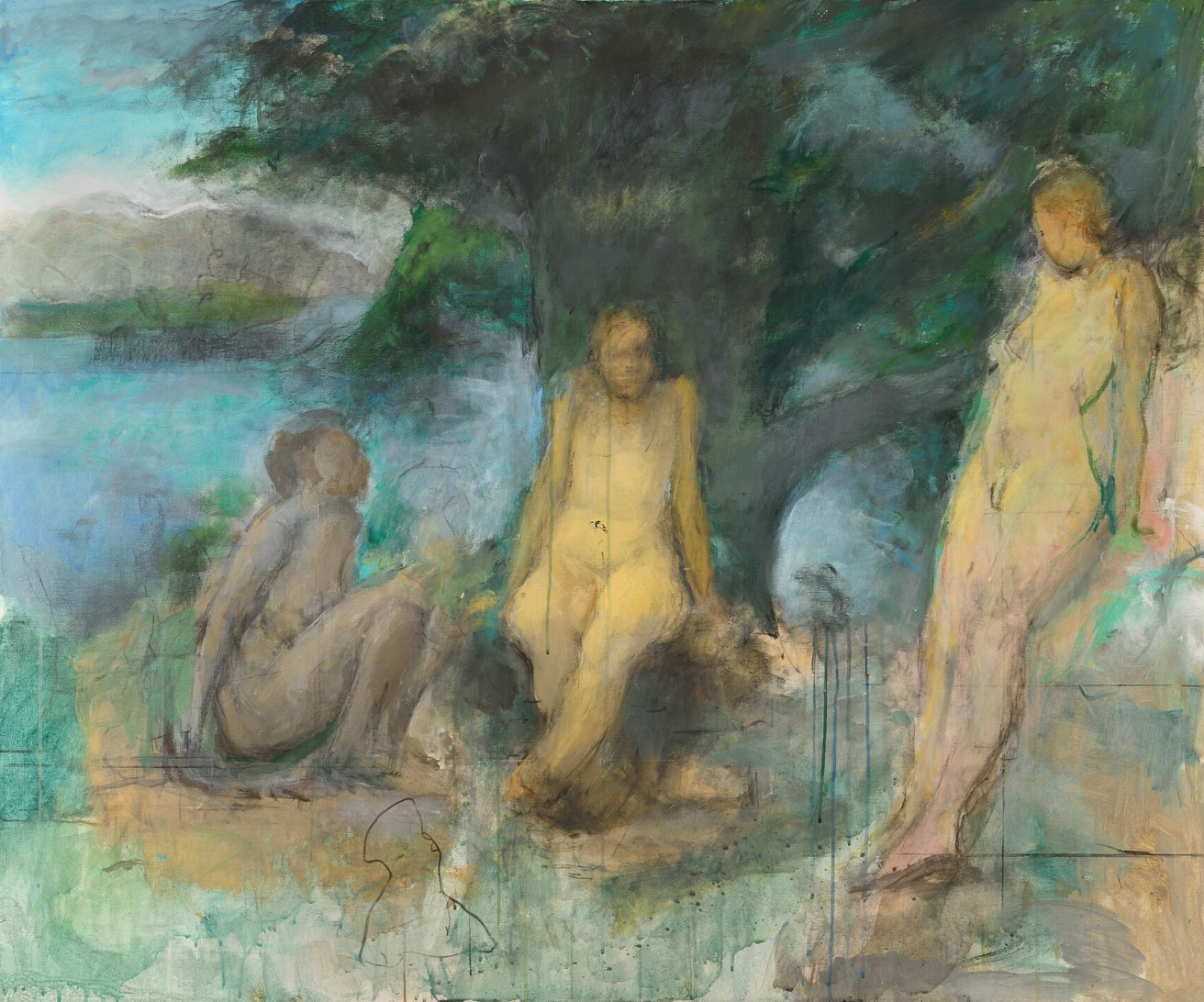
The eight artists featured in our Persistence of Vision exhibition at the University of Cincinnati DAAP Galleries continued making art after experiencing vision loss due to macular degeneration. The strategies they used might be employed by anyone who, by choice or necessity, wants to incorporate new methods and ideas into their studio practices.
Lennart Anderson (1928-2015)
Draw from a lifetime of material
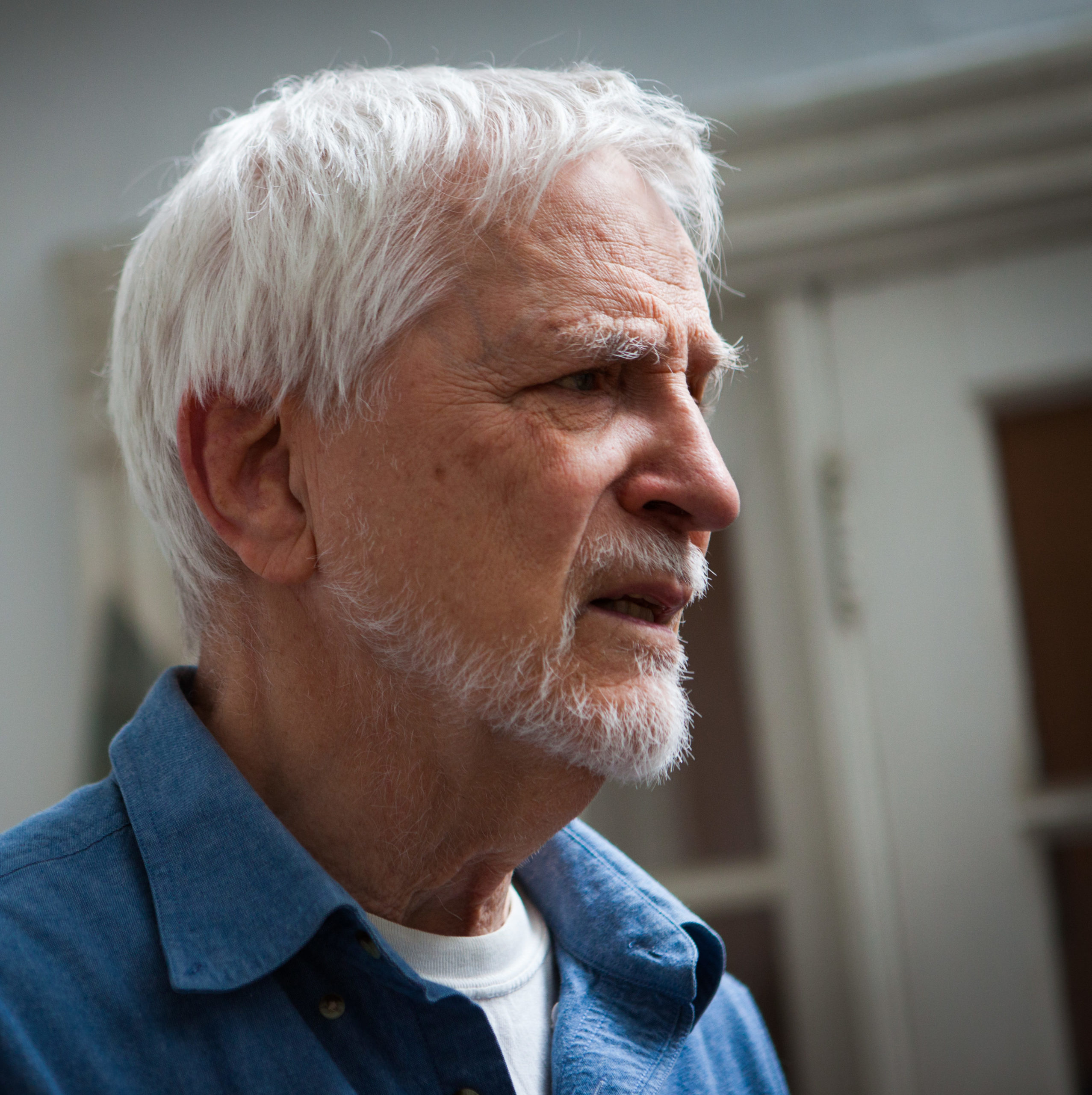
Born in Detroit, Lennart Anderson studied at the Art Institute of Chicago, Cranbrook Academy, and the Art Students League of New York City under Edwin Dickinson. He received many awards, including a Guggenheim Fellowship, National Endowment for the Arts grant, Tiffany Foundation grant, and the Prix de Rome. Best known for his meticulous paintings done from direct observation, throughout his career Anderson also worked from imagination and memory, notably on a series of large-scale bacchanals he spent decades completing.
Anderson’s right eye was affected by macular degeneration in 2001. For the next six years he relied solely on his left eye, with little change to either his paintings or his painting practice. After his left eye succumbed in 2007, however, he found it hard to paint from direct observation. As a result, his late work relies more heavily on imagination and memory than his early work did, though he continued to also paint occasionally from direct observation.
Often, our deepest passions can assert themselves more strongly in times of stress. This was the case for Anderson, who returned to some of his earliest subject matter when he lost his vision. As he had decades before while studying at Cranbrook, he began executing paintings based on mythological motifs. To do these paintings, he transferred drawings he had completed while he was teaching at Brooklyn College to his canvas at a larger scale. Three Nymphs on a Bluff, his unfinished last work, was the last of several iterations of this theme in the last decade of his life.
Anderson also forged ahead with new iterations of his Idyll series. Along with Idyll 4, begun in 2012, he continued to work on Idyll 3, which he had started in the 1970s, finishing it just a few years before his death. Among other strategies, he used a cell phone to assess his work, taking photos of work-in-progress and drawing these images up to his eye to examine them very closely.
Serge Hollerbach (b. 1923)
Delight in the doing
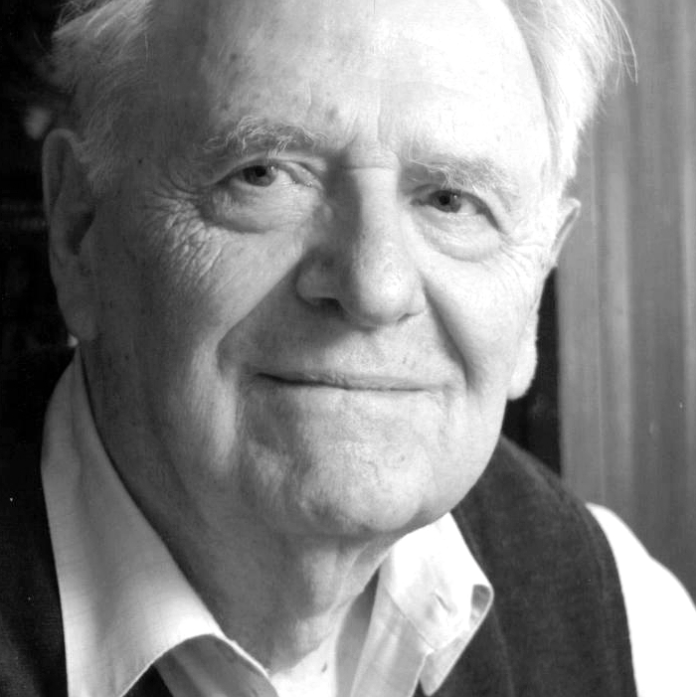
Born in Russia, Serge Hollerbach studied in Leningrad at a high school run by the Academy of Fine Arts. His studies were interrupted when the Nazis invaded the city in 1941, and he was sent to Germany as a forced laborer. After the war, he enrolled at the Munich Academy of Fine Arts. He immigrated to the United States in 1949 and settled in New York City, where he still resides.
Before he lost his vision, Hollerbach was an inveterate observer. He always carried a sketchbook, making paintings on site or in his studio based on direct observation. Upon being diagnosed with macular degeneration twenty years ago, however, he could no longer see well enough to draw and paint from life and began working from what he calls his “third eye.”
His notion of the third eye is derived from the Austrian expressionist painter Oskar Kokoschka, who himself developed macular degeneration. For Hollerbach, the third eye refers to “inner vision, something that your spirit, mind, or soul, sees.”
To be playful, you have nothing to lose. Nothing to lose is a new kind of freedom.
Serge Hollerbach
What this means is that, while in Hollerbach’s pre-macular paintings he relied heavily on observation, in his post-macular paintings he relies on intuition, unselfconscious mark-making, and the pure physicality of painting to create bolder, more expressionistic works of art.
Hollerbach says his painting used to be “work.” His artistic vision was entwined with the demands and expectations around making work that could be exhibited and sold. Now, it involves “play,” letting go of rigid perfectionism, embracing that he has nothing to lose. In his own estimation, vision loss has freed him from the “tyranny” of clear vision and the commercial pressures that pushed him toward a more detailed, representational style. For the first time in his life as an artist, he is finally doing exactly what he wants.
Dahlov Ipcar (1917-2017)
Simplify

Dahlov Ipcar was born in Windsor, Vermont, and grew up in New York City’s Greenwich Village. Her parents, the artists William Zorach and Marguerite Thompson Zorach, encouraged her to paint from an early age and served as her mentors. Best known for her kaleidoscopic paintings of animals, Ipcar also produced fabric collages, hooked rugs, needlepoint tapestries, and soft sculptures. In addition, she was an award-winning illustrator and author of dozens of children’s books.
For many years, Ipcar had a mild case of macular degeneration that she kept private. Which wasn’t hard to do, since the disease scarcely impacted her art. In 2015, however, her vision precipitously declined, and she could no longer finish paintings. At first, she was afraid her career was over, but after a period of adjustment she began to produce new work, making line drawings of animals, sometimes using a felt-tip marker, based on her memory of form and gesture.
The drawings are bold, imaginative, and simple, a contrast to the intricacies of her earlier work but powerful in their own right.
David Levine (1926-2009)
Paint for yourself
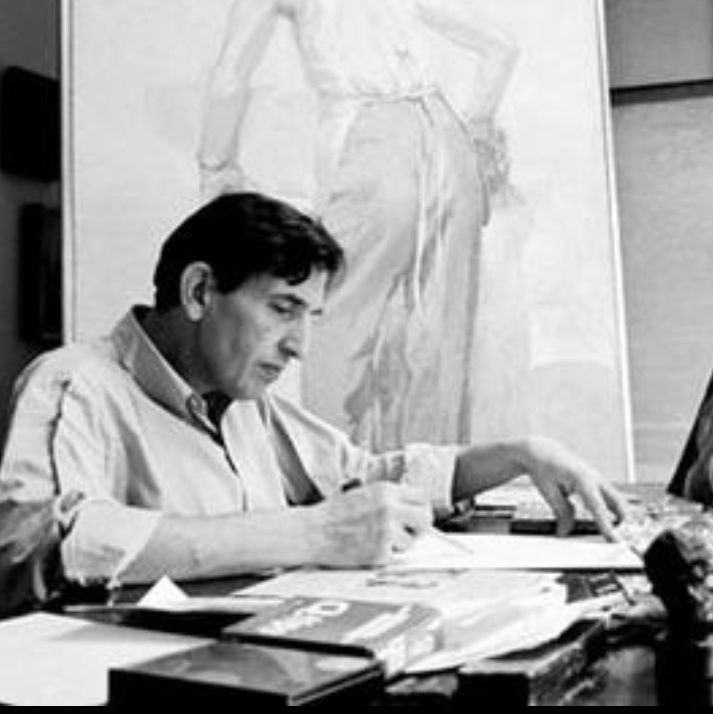
Born and raised in Brooklyn, David Levine studied painting at the Pratt Institute and Temple University’s Tyler School of Art, as well as with Hans Hoffman in New York. His literary and political caricatures appeared in every issue of the New York Review of Books (NYRB) from 1963 to 2007, as well as on the covers of such publications as Esquire, Time, Newsweek, the Nation, and the New Yorker. What is not as well known is that Levine was also a masterful painter, especially in the field of watercolor.
Levine’s late-life struggle with macular degeneration became public in 2008, with an article in Vanity Fair about the dramatic change in his “post-macular” caricatures. Levine had been inextricably linked to the NYRB since it started publication in 1963, but for the first time its editors began rejecting his drawings. By the time his drawing of Don DeLillo appeared in the June 2007 issue, Levine was no longer getting assignments.
Feeling isolated, he retired from his career as a caricaturist and professional illustrator. In the last few years of his life, he devoted himself entirely to the more lyrical and forgiving mode of oil painting. (At the height of his career as a caricaturist, he’d often had to defer his painting.) In his final unfinished painting, The Last Battle, a familiar subject for him—a mass of bathers at Coney Island—is transmuted by the emotional vision of memory.
Robert Andrew Parker (1927)
Find a groove and keep doing it
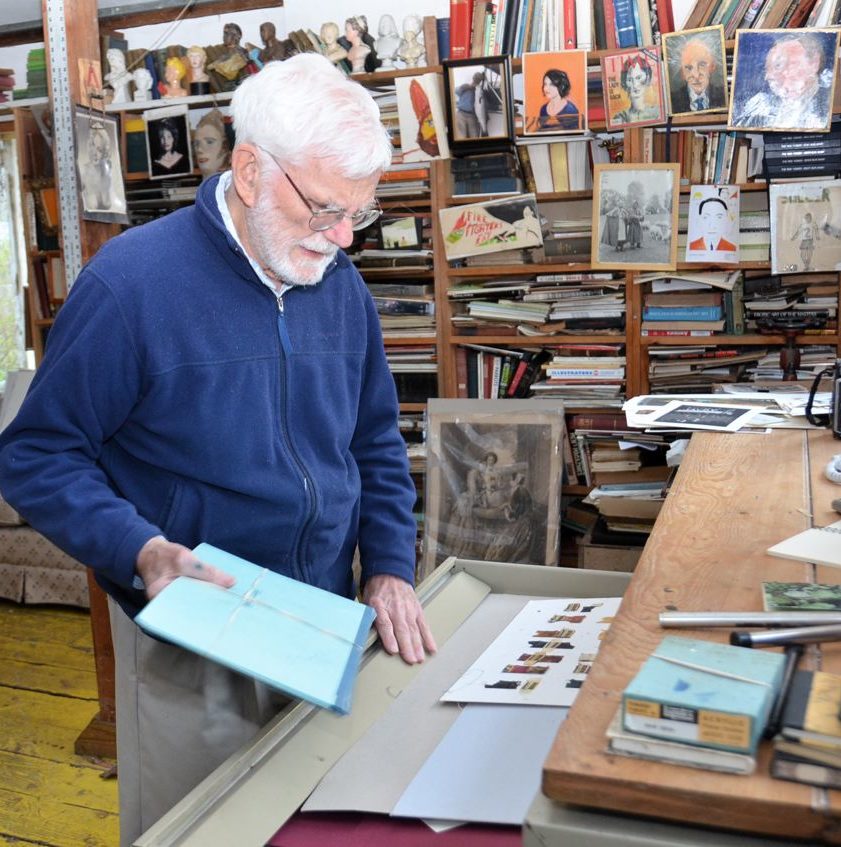
Born in Norfolk, Virginia, Robert Andrew Parker moved frequently as a child, spending time in New Mexico, Seattle, Indiana, and Chicago. After being discharged from the Army Air Corps at the end of World War II, he studied at the School of the Art Institute of Chicago, the Skowhegan School of Painting and Sculpture, and the historically important printmaking studio Atelier 17 in New York City. He eventually settled in Connecticut, where he still resides.
In his long career as an artist and illustrator, Parker has exhibited and published his work widely, illustrated over forty children’s books, and received numerous awards, including a Guggenheim Fellowship, Caldecott Honor, American Library Association Notable Book award, and a fellowship to the Tamarind Lithography Workshop in Los Angeles.
Parker creates every day, and has not let up after a diagnosis of macular degeneration in 2003. Vision loss, in fact, has scarcely affected either his productivity or the nature and quality of his work. His days are spent in his studio, where he makes prints, paintings, sculptures, and books, exploring subjects and themes that have interested him since childhood with the perseverance of one obsessed. He accepts that he can’t work in as detailed a manner as he once did, his one concession to vision loss being to work more closely, sometimes with a magnifying glass in hand.
Thomas Sgouros (1927-2012)
Transmute the principles of painting
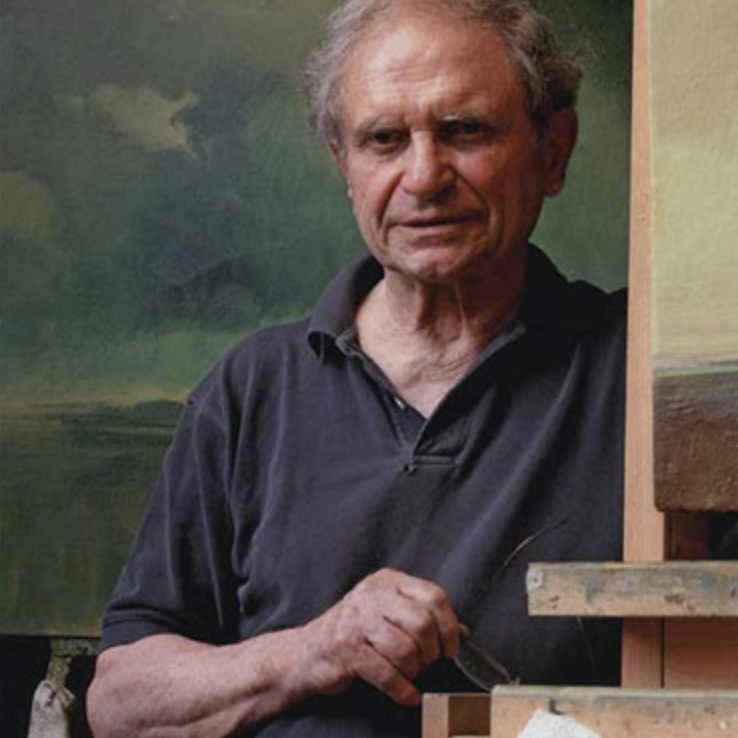
Thomas Sgouros was born in Chicago and graduated in 1950 from the Rhode Island School of Design (RISD). After working as professional illustrator in Boston and New York, he returned to RISD in 1962 to teach in the illustration department, where he remained as a beloved professor until 2008.
When Sgouros was diagnosed with macular degeneration at the relatively young age of 65, he struggled with serious depression. Nevertheless, he continued teaching at RISD and working in his studio. He began to paint on a much larger scale, and to use masking tape and a T-square to create horizon lines. These approaches helped him paint what he called his Remembered Landscapes, the sole subject of his work for the last twenty years of his life.
On the surface, his Remembered Landscapes seem to be a dramatic departure from the small, detailed still lifes and street scenes he painted before macular degeneration. Yet Sgouros felt they were very analogous. In an interview late in life, he explained:
I found less and less that I needed to record what was there and realized more and more that solving the riddle of the rectangle or the square was what painting was about. That aspect of painting is what makes [the remembered landscapes] possible, since that’s all they are. They’re remembered landscapes; they’re not acute observations of reality, or translations of reality into some kind of photographic or realistic terms, but rather, a recognition of the entire canvas and the shape relationships—the big against the little, the rough against the smooth, the cool against the warm. Which is the language of painting and what made losing my sight not that large a tragedy in the last analysis.
Hedda Sterne (1910-2011)
Work monochromatically, depict the essence
Hedda Sterne was a prolific artist whose diverse body of work defies categorization. Born Hedwig Lindenberg in Bucharest, she showed an early proclivity for drawing. After studying art history and philosophy at the University of Bucharest, she went on to study the studio arts at the ateliers of Ferdinand Léger and André Lhote in Paris. Her first international recognition came when her collages, praised by Jean Arp, were included in a group exhibition in Paris in 1938.
In 1941 Sterne fled to the United States to avoid persecution as a Jew. She became involved with the New York School, and exhibited at Peggy Guggenheim’s Art of This Century gallery.
By the time Sterne’s vision was affected by macular degeneration at the age of 83, she was living a somewhat monastic life in Manhattan. Despite her vision problems, she spent her days reading, meditating, and “painting day and night, without exaggerating,” as she wrote in a letter to a friend.
At 88, Sterne could no longer see well enough to paint, and began to draw exclusively. Working monochromatically with such materials as pencil, watercolor, wax crayon, and pastels on white paper, she made drawings that can often be read as heads and subjects from nature, like insects and trees. In her last years, she also began to draw what she called “ghosts”—faces from a remote past that appeared to her and wanted to be portrayed, as she explained. The ultimate subject of Sterne’s late work was not the outward appearance of things but, rather, the inner structures of being, rarely visible to most of us, which Sterne had become attuned to over years of meditative practice.
William Thon (1906-2000)
Trust your “instinct”
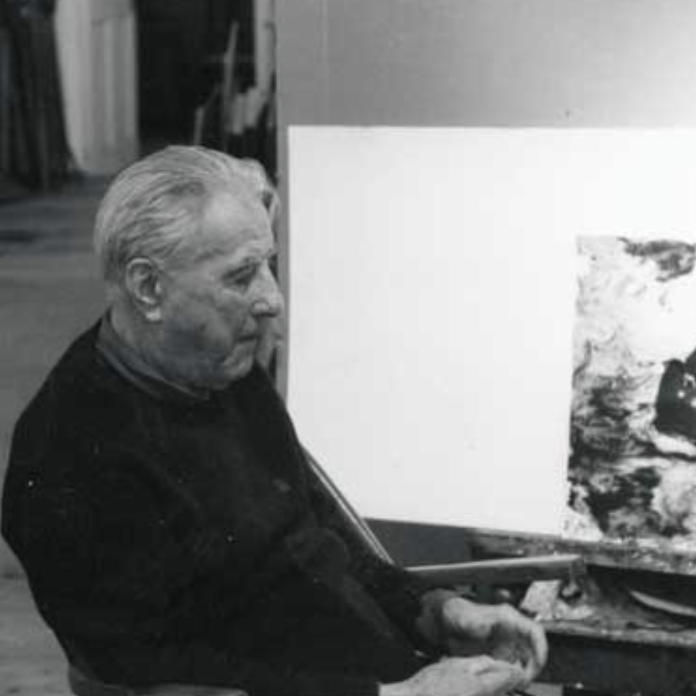
Born in New York City, William Thon spent a single month studying at the Art Students League of New York City before serving in the Navy in World War II. Despite his lack of artistic training, he won the Prix de Rome shortly after the war’s end, followed by a fellowship at the American Academy in Rome, where he later served as a trustee and artist in residence.
A fabulously successful artist who settled in Maine, Thon created some of his finest work between when he was diagnosed with macular degeneration in 1991 and his death in 2000. Macular degeneration manifests differently for everyone. For Thon, it took away his perception of color. In his last paintings, he developed strategies that deftly juxtapose blacks—acrylic, ink, watercolor— against the white of the paper. By using new techniques to depict familiar subjects, he injected a fresh perspective into his work.
My eyes are in my fingers.
William Thon
A sailor as well as a painter, Thon maintained that, when he lost his sight, he could sail and paint by “instinct.” He painted The Birches, on display in The Persistence of Vision exhibition, as a demonstration piece at a forum on art and vision impairment at the Farnsworth Museum in 1996. “My eyes are in my fingers,” he said when he demonstrated his working methods, pouring black ink, acrylic, and water onto a sheet of water, then working into it with his hands.

Comments
I just found out that I have macular degeneration this morning. My vision had been blurring, so I finally went to my eye doctor. I am an artist and I am working to sell my art to help raise funds to help others, I will share more about that next time. I also have cancer and have huge medical bills to pay. But I also have something many people do not have. I have many people who care deeply about me. And I have wonderful medical care where I live. I am also planning to go to seminary next year. And once I get MDiv and become ordained my art will be focusing on how God cares about everyone and with lots of love. When I say everyone I also include animals. I really do think that all the kitties I have had for my pets in my 76 years will be in heaven with me someday.
Now as far as art, I am so glad I found this page. I will write more as I start my journey on art. I do not have a lot of training like the above artists have. I only got started painting in 1992 when I lived in Austin, TX, and was invited to participate in the Art From The Streets program. I sold a lot of art there until my eyes were damaged from a brain aneurysm pressing against my optic nerve. I moved back to where I grew up in Norfolk, NE, and will be painting many scenes that I remember so well growing up on a farm with 9 siblings and wonderful parents.
Leave a Comment